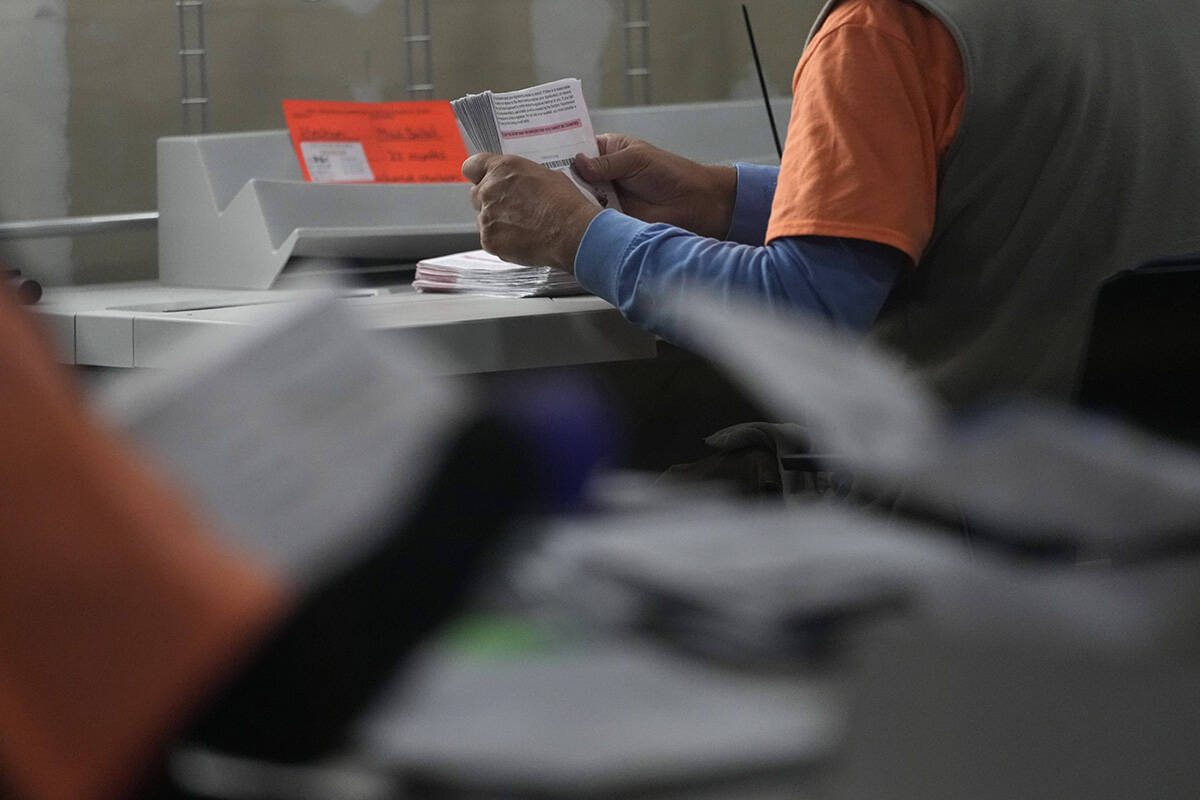Were thousands of Nevadans disenfranchised in 2022?
Are thousands of Nevadans losing the right to vote because of problems with the ballot curing process? Or is the system working, preventing fraudulent ballots from being cast?
The Las Vegas Review-Journal asked readers to fill out a Google form with any election-related questions they have in hopes to clear up confusion as the 2024 election draws nearer.
College of Southern Nevada history professor Sondra Cosgrove said about 10,000 mail-in ballots were not counted in total between the primary and general elections in 2022 because they were not cured. (Curing takes place when ballots with mismatched or missing signatures are verified by the voter. Local election officials notify the voter that there is an issue that needs to be fixed before their vote can be counted, and those voters are asked to sign an affidavit that says they’re eligible to vote and that they only cast one ballot.)
Cosgrove asked, “how will we ensure that thousands of voters won’t again lose their right to vote in 2024 due to voter errors?”
Cosgrove is correct. In the 2022 primary election, about 4,000 mail ballots were not cured successfully, and in the general election, nearly 6,000 mail ballots were not cured successfully.
To be fair, almost 15,000 mail ballots were cured successfully between the 2022 primary and general elections, but in races that came down to 300 votes, 10,000 ballots could have made a difference in outcomes.
“The Secretary of State’s Office is committed to making sure every eligible voter’s ballot is counted, and we are always working to improve our systems to ensure that our elections are secure and accessible,” the office said in an email to the Review-Journal.
The secretary of state’s office requested a one-time appropriation of $90,000 from the Legislature to fund a contract that aims to make it easier for a voter to verify their signature, the secretary of state’s office said.
Counties currently rely on sending letters, emails and making phone calls to alert voters that their signature needs to be cured, but the funding will go toward a service that will allow a voter to use their cell phone to provide the necessary information to their clerk or registrar. Voters will be able to quickly see that they need to cure their ballot and provide the necessary information in a timely manner, according to the secretary of state’s office.
David Damore, political science professor at UNLV, said it’s a good question whether or not the curing process is hindering people’s abilities to vote, or if it prevents fraudulent ballots from being cast.
“Without any data, it is impossible to know how many of the uncounted ballots would have been counted if they had been cured and how many would have been thrown out,” Damore said in an email. “At the same time, we do not know that efforts to cast fraudulent ballots are exceedingly rare and Nevada does an excellent job administering elections.”
A person can vote in person to alleviate any concerns about their mail-ballot not being counted, but Damore expects that as voters will become more familiar with the process and ballot tracking becomes more common, the number of ballots that need curing will decrease.
Do you have any questions about how Nevada’s election process works? Fill out the Google Form on the Review-Journal’s website.
Contact Jessica Hill at jehill@reviewjournal.com. Follow @jess_hillyeah on Twitter

















